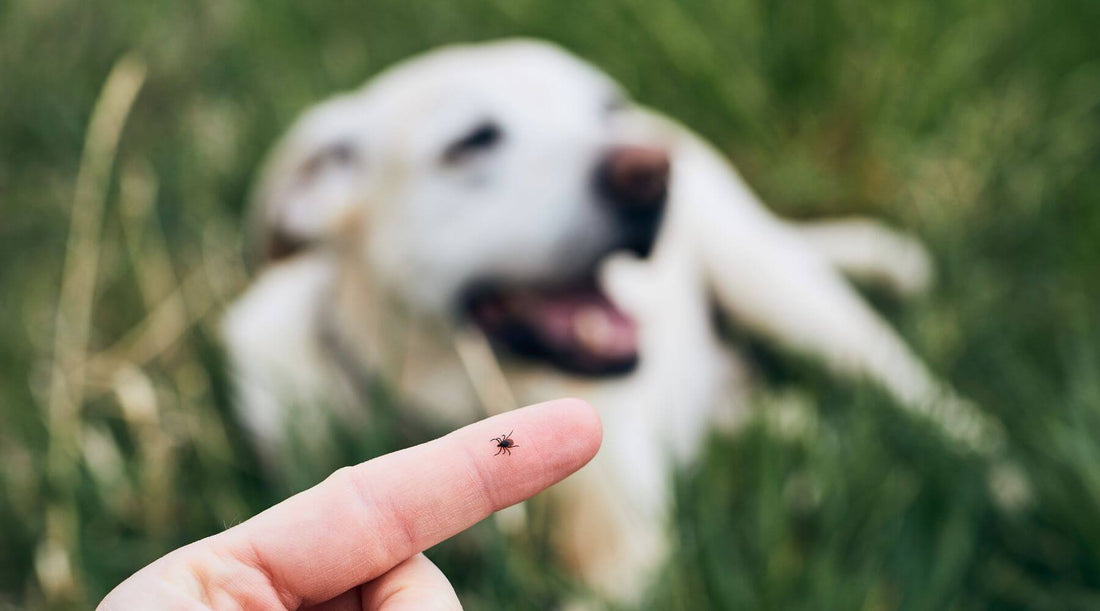
Expert Guide on How to Avoid Ticks Yourself
Share
In the UK, we don't normally have to worry too much about bloodsucking insects. But that doesn't mean we don't have any at all. The UK is home to around 20 species of ticks, one of which, the castor bean or deer tick (Ixodes ricinus) has been known to bite humans.
Tick bites are more than just annoying. They can also spread diseases, some of which can have long-term consequences for human health. That's why it's so important to avoid ticks and get rid of them wherever possible.
Let's examine what you need to know about ticks and how to prevent them from becoming a problem.
What are Ticks?
Ticks are arachnids, meaning that like spiders, they have eight legs. Unlike spiders, though, they feed on the blood of mammals. The deer tick gets its name from the fact that it often feeds on deer in the wild, but its diet is not restricted to deer. It can bite domestic animals and even humans, too.

Are Ticks Dangerous?
They can be. A tick bite by itself isn't a big problem, although it may be a little itchy. The bigger problem is that ticks often carry microorganisms that can cause disease. The deer tick/castor bean tick can cause tick-borne encephalitis, anaplasmosis, and babesiosis, but by far the most common illness caused by ticks is Lyme disease. This disease is on the rise in the UK, with close to two cases per 100,000 population reported in 2021.
The Tick Life Cycle
To avoid being bitten by ticks, you need to understand a little bit about how their life cycle works.
A female tick needs to feed on blood to lay eggs. She will feed on large mammals like sheep, horses, deer, dogs, horses, cattle, and humans for between 6 to 13 days. When feeding is complete, she will drop off the host and lay her eggs, then die. She may lay thousands of eggs at a time.

The eggs hatch into larvae that will look for hosts like moles, mice, birds, and bats. Young ticks feed for 3 to 5 days, then drop off the host and shed their skins to grow in a process called moulting. To find another host, the ticks will climb to the top of tall blades of grass or branches and wait for a host to brush past. When the ticks reach adulthood, they look for large mammals to use as hosts, including humans.
How to Avoid Getting Bitten by Ticks
1. Know Where Ticks Live
Ticks are commonly found in:
- Long grass and bracken
- Woodlands, moorlands, and heathland
- Leaf litter and shady areas
- Gardens and parks (yes, even in cities!)
They're most active from spring to autumn, especially March to October.
2. Dress Smart
When walking in tick-prone areas:
- Wear long sleeves and trousers
- Tuck trousers into socks
- Stick to paths and avoid brushing against vegetation
- Choose light-coloured clothing to spot ticks more easily
3. Use Repellent
Apply an insect repellent that contains:
- DEET (at least 20%)
- Picaridin
- IR3535
Apply to exposed skin and clothing, especially shoes, ankles, and cuffs.
4. Check for Ticks
After being outdoors:
- Check your entire body, especially:
- Behind knees
- Groin
- Armpits
- Scalp and hairline
- Check children and pets too
- Use a mirror or get someone to help with hard-to-see spots
5. Shower and Change
As soon as you return home:
- Shower within 2 hours to wash off any unattached ticks
- Put outdoor clothes in a hot wash or tumble dryer to kill any hitchhikers
What to do if you get bitten by a tick
- Use a tick removal tool or fine-tipped tweezers
- Grasp the tick as close to the skin as possible
- Pull out slowly and steadily - don't twist!
- Clean the bite area with antiseptic
- Do not burn, squeeze, or cover the tick in creams or oils
Symptoms of Lyme disease
Ticks can carry Lyme disease, so contact a doctor if you notice:
- A bullseye-shaped rash
- Flu-like symptoms (fever, fatigue, headache)
- Muscle or joint pain

How to keep ticks off your property
Ticks are usually encountered in woodlands, fields, and countryside areas. However, if you live in a rural place, it's not a bad idea to perform some common-sense steps to reduce the population of ticks on your property.
- Keep grass short
- Trim edges and borders
- Remove leaf litter, especially in shady areas
- Install fencing to keep out wildlife that may carry ticks
Avoiding Ticks
Ticks can cause health problems that last a lifetime, but there's a lot you can do to avoid being bitten by them. Wear clothes that cover you fully in remote areas, use tick repellent, and check yourself for ticks regularly. Reduce undergrowth and moisture on your property to make it less appealing to ticks. Follow these steps on how to stop ticks and you can keep yourself safe from these bloodsucking creatures.
At PestBuddy, we're here to empower you with effective, fast and easy-to-use DIY tick products. Explore our range of products to take control of your pest problems with confidence.
